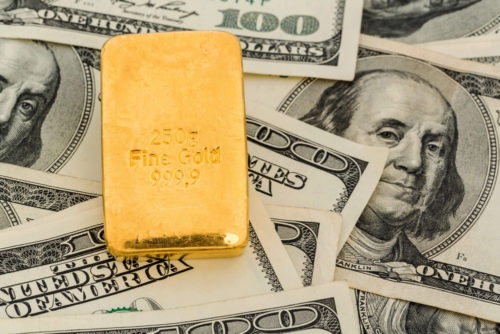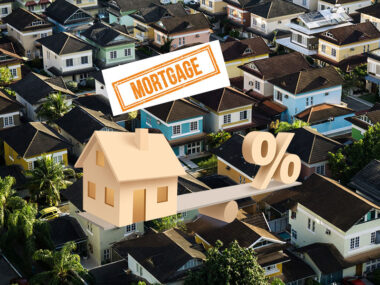Purchasing power is the value of a currency. It denotes how much of a good or service you can buy. Sometimes referred to as currency’s buying power, purchasing power specifically defines what you have the power of purchasing. Purchasing power touches every aspect of economics. Factors like inflation and the minimum wage affect the value of a dollar, and thus, your purchasing power. Inflation decreases how much of a good or service a unit of currency can buy, and because the minimum wage isn’t automatically adjusted for inflation, declines in the purchasing power of the minimum wage contribute to lower living standards for workers who earn the minimum.
When purchasing power decreases, the costs of goods and services increases, which raises the cost of living and hampers consumer spending and borrowing. In other words, if there is a modest decrease in purchasing power, the economy is growing. If there is an increase in buying power, this indicates a state of stagnation.
Table of Contents
How Does Inflation Affect Consumer Buying Power?
Inflation has a major effect on the purchasing power of a currency, causing prices to increase. When there is a decrease in purchasing power due to inflation, the costs of goods and services spike and contribute to a higher cost of living as well as higher interest rates. Credit ratings fall, and these factors can ultimately cause an economic crisis.
To simplify the way you think about purchasing power, consider what the average salary was 50 years ago. The cost of living was significantly less than it is now, so people didn’t need to make as much money to maintain their quality of living. Because of inflation, that salary today wouldn’t allow you to live within the same means as it did 50 years ago.
To calculate purchasing power, use the Bureau of Labor Statistics’s Consumer Price Index (CPI). For example, in January of 1975, the CPI was 38.8. In January 2018, the CPI was 247.9. To derive the change in CPI, divide 1975’s data by 2018’s data, then multiply by 100. In this case, (38.8 / 247.9) x 100 = 15.7%. To get the percentage of change, subtract that number from 100. In this example, the dollar had 83% less purchasing power in 2018 than it did in 1975.
History of Purchasing Power
Historically, inflation and hyperinflation — also known as the destruction of purchasing power — have been caused by devastatingly expensive wars. In the United States, we saw an economic recession in 2008 when purchasing power was destroyed because of the global financial crisis. Increased globalization and the introduction of new currencies forced the government to orchestrate policies that controlled inflation and protected purchasing power to prevent an extended recession from happening.
In an effort to lower interest rates and increase the money supply, the U.S. Federal Reserve introduced quantitative easing in 2008. Interest rates were close to zero in the hopes that the market would experience an increase in capital, increasing the amount of money lent and overall liquidity. Once the economy stabilized, quantitative easing was paused.
Loss and Gain in Purchasing Power
Purchasing power losses and gains correspond to increases and decreases in how much consumers can purchase. When prices increase, consumers lose purchasing power. On the other hand, when prices drop, consumers gain purchasing power. Purchasing power loss can be caused by government regulation, inflation, or disasters (natural or manmade). Purchasing power gain can happen due to deflation or advances in technology. The Consumer Price Index documents how the prices of consumer goods and services fluctuate. Below is a closer look at how the increase and decrease of purchasing power correlate with what’s going on in the economy specific to inflation, deflation, cost of living, and minimum wage.
- Inflation changes the value of a dollar, which directly correlates with purchasing power. The purchasing power of a dollar can increase or decrease depending on inflation rates. Because we live in a world where we’re constantly making and spending money, over time, inflation can reduce the buying power of a dollar from one year to the next.
- Deflation can have good short-term effects, but bad long-term ones. Short-term, deflation increases purchasing power for consumers because prices drop. This allows consumers to buy what they want and save more of their income. In the long-term, lower prices can force companies to cut operating costs, which ultimately eliminates jobs and contributes to an eventual decrease in spending.
- The cost of living is continually increasing. Ultimately, this is a reflection of inflation in the economy, which decreases the amount of purchasing power your money has. To combat this, many people invest their money to outpace the rising cost of living in the future while still maintaining their current standards of living.
- Minimum wage determines the living standards of minimum wage workers. As such, it also determines the purchasing power of minimum wage workers. The higher the minimum wage, the more purchasing power those earners have.
Purchasing Power Risk
Investments with fixed interest rates are the most susceptible to purchasing power risk or inflation. Inflation can undermine the returns seen on investments, such as bonds, through a decline in purchasing power. Investments like debt securities, fixed annuities, certificates of deposit, and Treasury bonds are also susceptible to purchasing power risk or inflation. Similarly, retirees are at risk of purchasing power loss because they are living off of a fixed amount of income. As such, their investments need to earn a rate of return that is equal to or greater than the rate of inflation so that the value of their investments doesn’t decrease over time.
If you plan on investing, it’s important to understand what’s going on in the market. Understanding the state of the market will allow you to take control of your purchasing power and make smart choices about the goods and services you buy, as well as where you invest your money.
Image Source: https://depositphotos.com/





